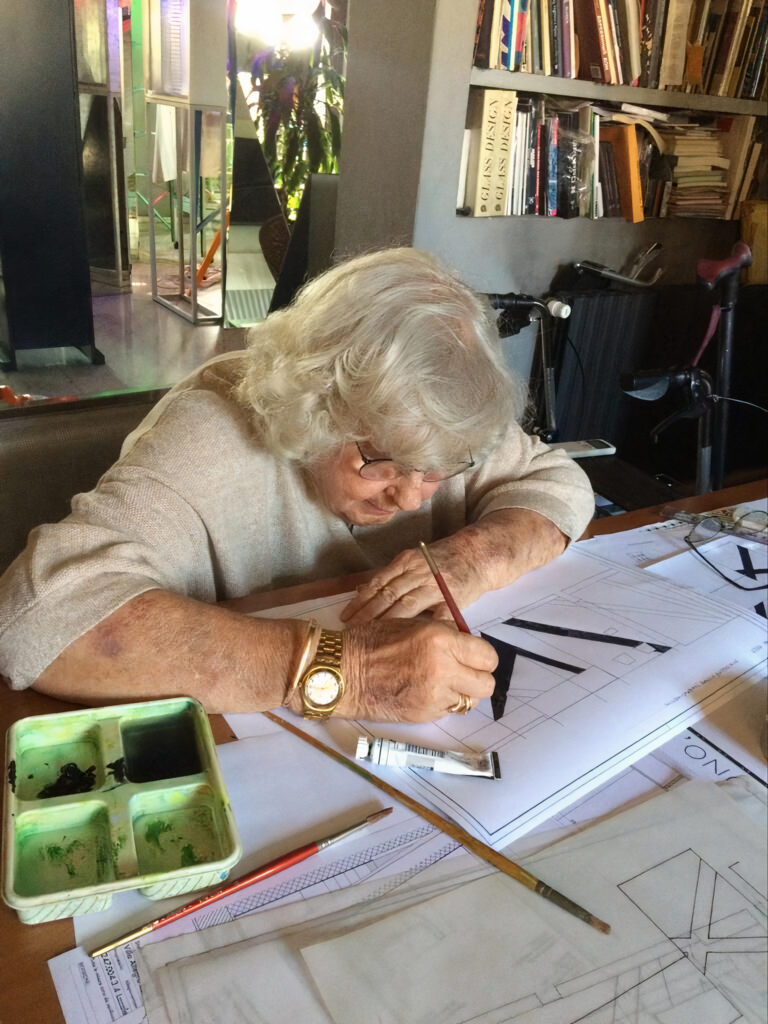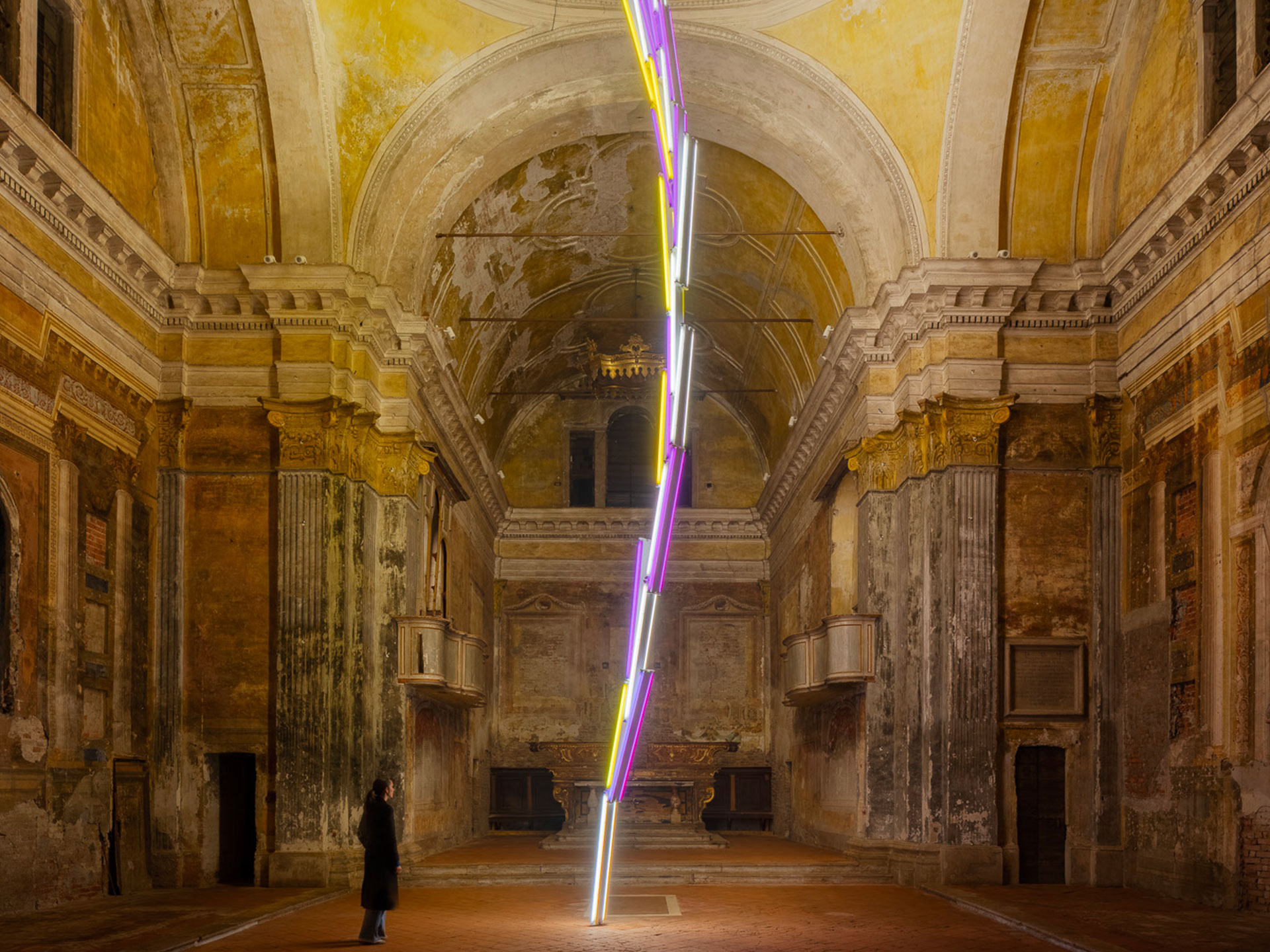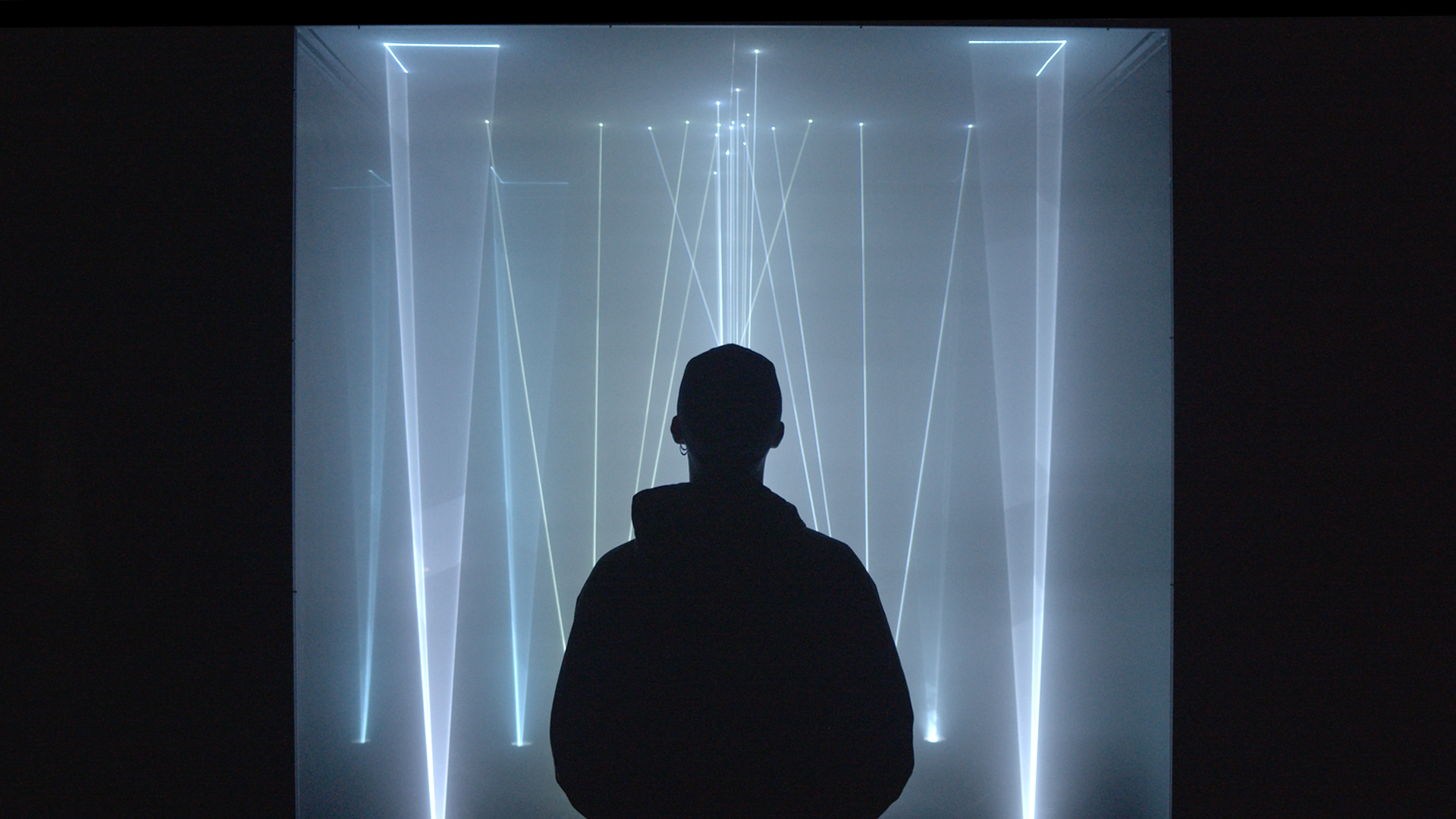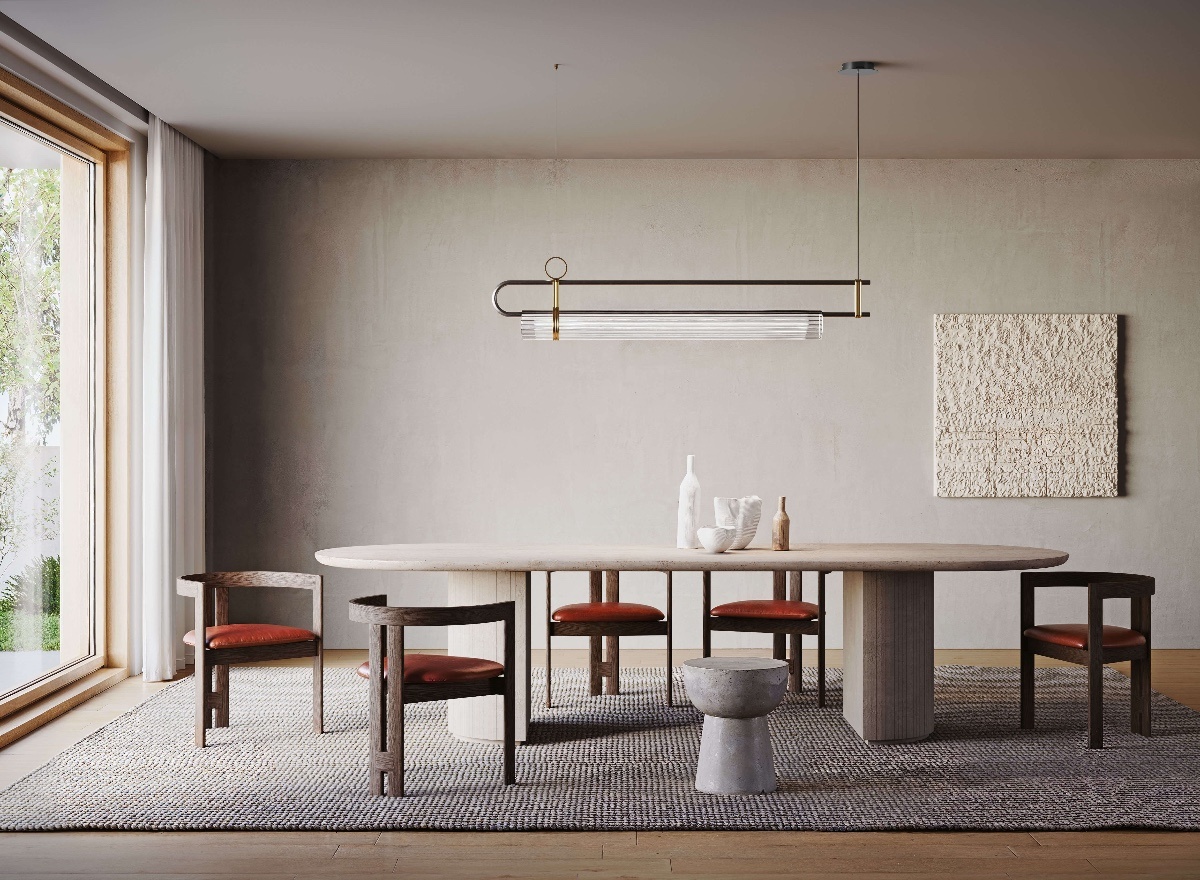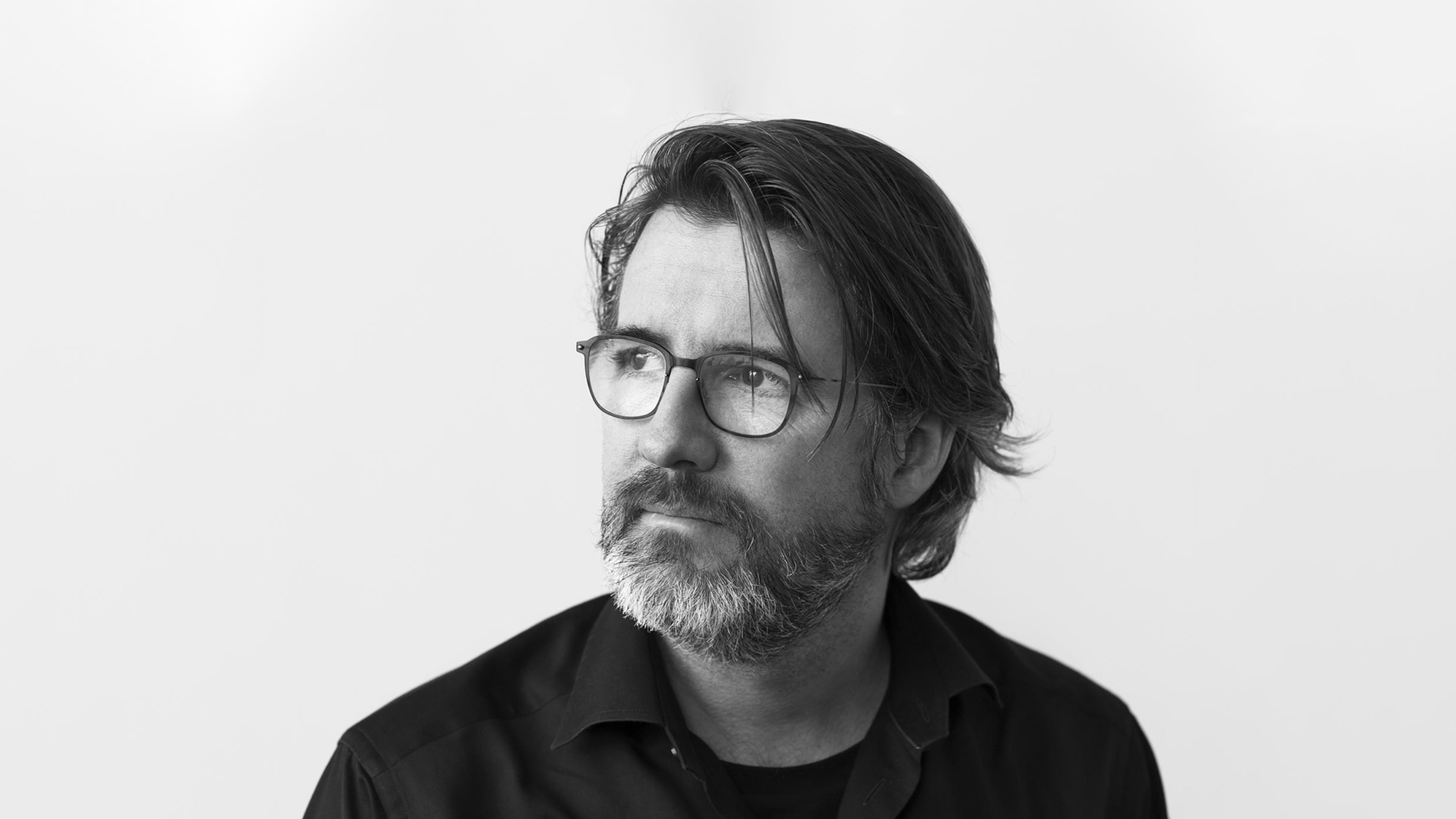Nanda Vigo’s multifaceted career, spanning art, architecture, and design, represents a unified life project pursued with great determination and passion within the context of modern European culture. This journey has made her a symbol of Milanese culture and beyond. Active in the post-war avant-garde movements, Vigo has always focused her design research on pure light sources, demonstrating a unique sensitivity to spatial relationships, transparency, and immateriality.
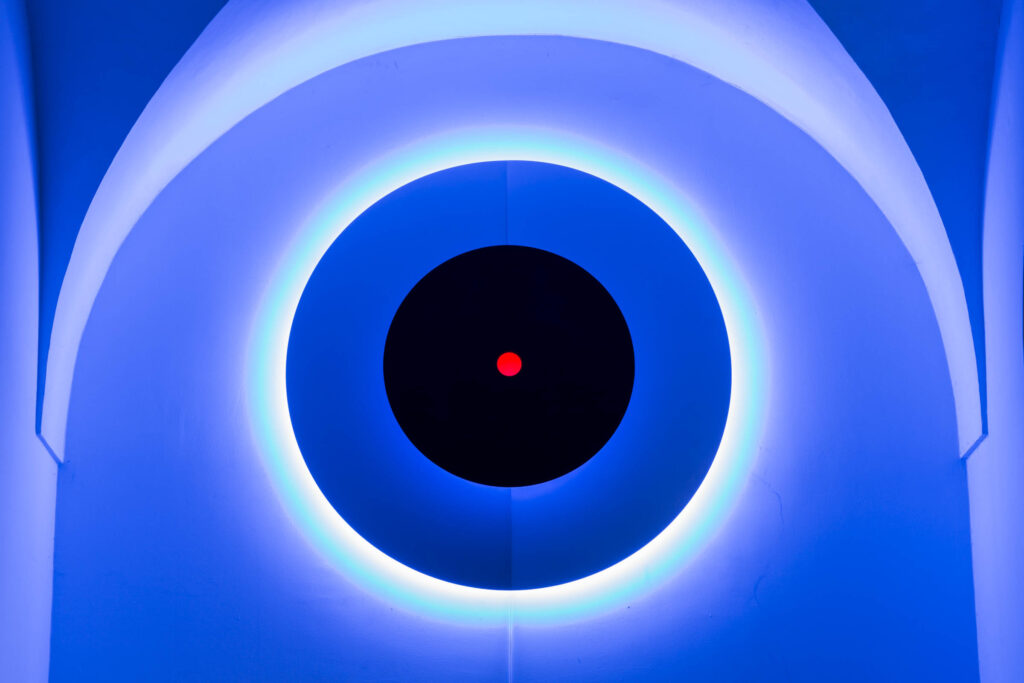
Born in Milan in 1936, Vigo is an architect, designer, and artist. She studied at the Politecnico di Losanna and worked in Frank Lloyd Wright’s studio. Her career began with experiences in San Francisco and Milan, and at the age of twenty-three in 1959, she established her own studio in Milan.
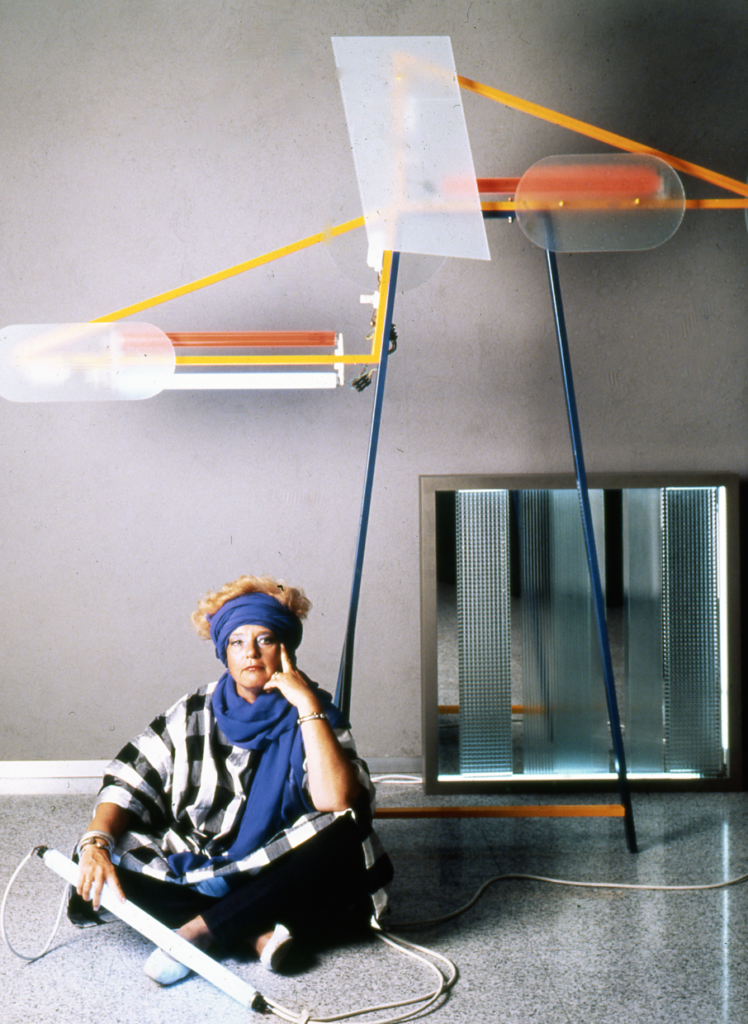
Nanda Vigo’s Journey
From the outset, Vigo collaborated with post-war Italian artists and designers, creating unique spaces like Casa Zero, Casa Gialla, Casa Blu, and Casa Nera. These homes are known for their open spaces, innovative materials, and experimental expressions.
Here, Vigo used technology to create dynamic, light-reflective structures, enhancing the works of artists like Fontana and Castellani. One of her notable projects is the interiors of Casa sotto la Foglia in Malo, designed with Gio Ponti and funded by collector Giobatta Meneguzzo. This “total environment” blends art, architecture, and design into a unique spatial experience. White stoneware ceramics, neon lights, and grey synthetic furs create futuristic spaces, emphasized by dazzling perimeter lighting and spatial continuity.
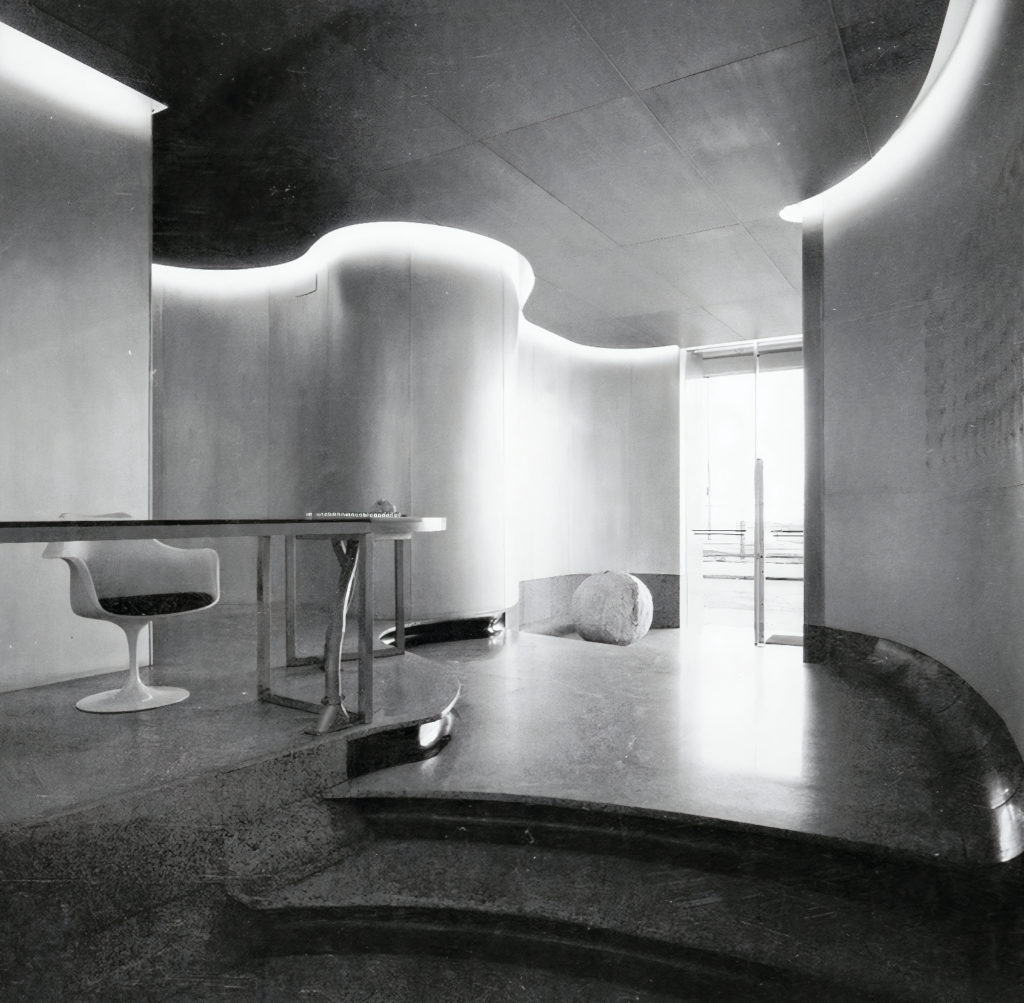
Her Ambiente Spaziale Utopie, created for the XIII Triennale, is another remarkable example. It offers an immersive experience with curved wall surfaces and lighting, devoid of sculptural forms. Vigo’s interior design projects paralleled her artistic work, expanding her spatial and formal research into architecture and visual arts.
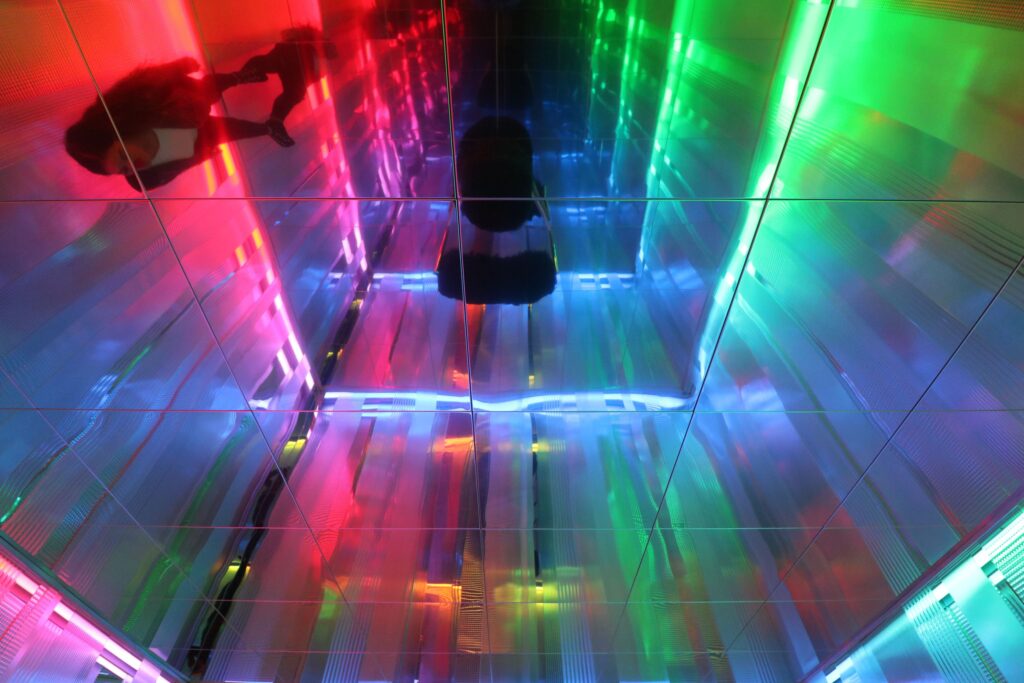
Her Cronotopi, started in 1964, were three-dimensional structures reflecting Giuseppe Terragni’s spatial grammar, focusing on capturing and reorganizing light, akin to the Azimuth movement and Gruppo T artists.
Vigo: Architect and Artist
We can identify two distinct aspects of Nanda Vigo. The first is an impassioned artist, deeply in love with light and colour and devoted to the great masters. She is a lifelong learner, constantly engaging with other artists, museums, books, and magazines.
Vigo, forever young at heart, honed her craft at Taliesin West and then as a student of art masters, collaborating with Enrico Castellani and working alongside Lucio Fontana. During this period, Vigo was imaginative, assertive, and spirited, fully dedicated to the wonders of her art. She approached light with the meticulousness of a craftsman and the creativity of a painter. This Vigo was a sculptor of light, a dreamer, always a step ahead with her boundless imagination.
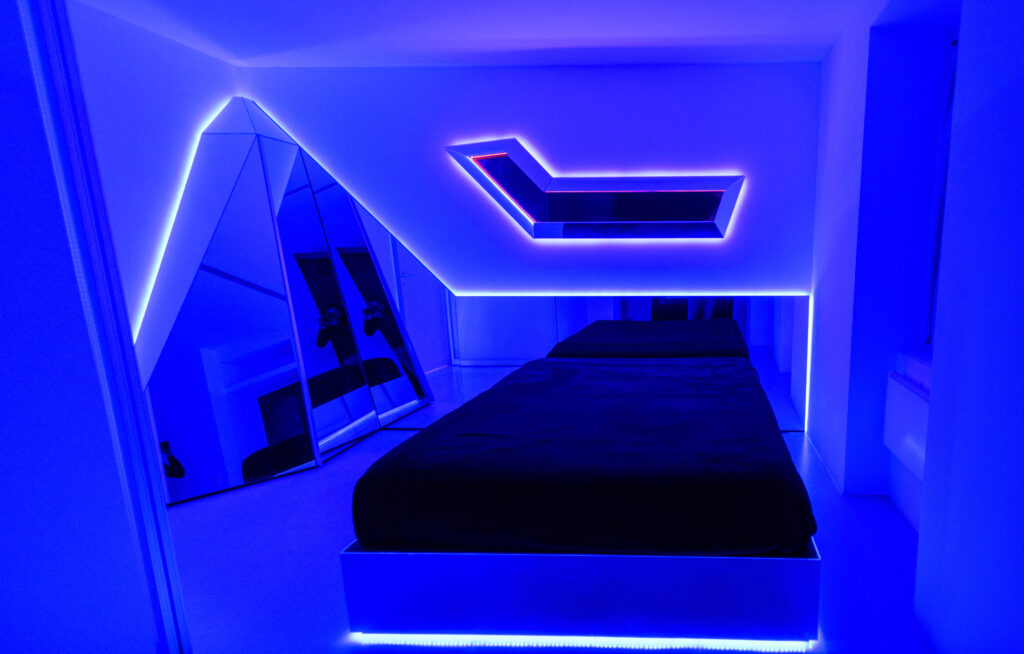
Then, there’s the second Vigo: disciplined, patient, determined, steadfast. An architect-artist who views space as a realm of extensions and intentions, an unconventional student of the European avant-garde. Minimalist, yet with the gravity of material illuminated by light. A designer in the tradition of Gio Ponti, always elegant and light because this second Vigo, like the first, possesses the ethereal quality of a cloud. Her designs aspire to vanish, to immerse themselves in the immaterial world of light.
Her ideal is to construct in the air, to suspend everything for a moment – a moment that lasts forever, using the immateriality of light as her medium.
